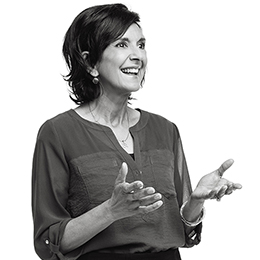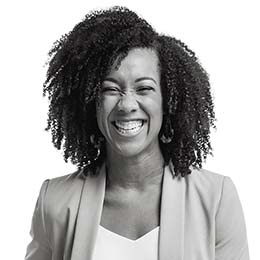
Trust is a powerful force that builds loyalty, increases credibility and supports effective communications
Leaders too often talk about having trust, rather than building trust. Trust is something that must be earned. It is not something that today’s business leaders can take for granted, because both internal workforces and external publics are increasingly cynical.
But leaders of well-respected, high-performing organizations have long known the value of building and sustaining trust. We recently talked to CEOs, senior HR executives and communications leaders in some of North America’s best organizations to obtain their views on why and how they communicate to build trust. We then considered the opinions of these senior business leaders in the context of our own lessons learned over a combined 50 years of corporate, academic and consulting experience. This article discusses some of the best practices for building trust.
Leading communications, engaging stakeholders
Building trust in an organization’s leadership requires a personal effort on the part of the leaders themselves. Yet it’s a team effort too. And the corporate function most likely to support leaders’ efforts to build or sustain trust is communications.Why communications?
Communications is fundamental to building trust,” says Jodi Macpherson, a communications expert at Mercer Inc. “It contributes to the creation of an environment of trust around leaders that enables them to lead effectively, engage employees and ultimately deliver results.” Communications serves as the positioning agent for message delivery and leadership development for senior managers. Successful business leaders have learned this from first-hand experience.Communications can’t make a person trust someone who is basically untrustworthy. But it can help create a culture in which trust can thrive. CEOs and senior managers who want to build trust with key stakeholders have a plethora of communication tools at their disposal, and capable communication professionals to assist them.
Building trust, creating value
Why should CEOs and senior managers care about building trust? Aren’t there already too many things to worry about nowadays, such as sustaining profitability in a cutthroat, competitive environment? And what about that stagnating share price or those restructuring projects that never seem to produce all the promised benefits?Trust is a powerful force that builds loyalty, increases credibility and supports effective communications. It gives you the benefit of the doubt in situations where you want to be heard, understood and believed.
Leaders of high-performing, well-respected companies are known for their “open-book communications.” They create a culture of trust by sharing information quickly and freely, and building relationships with employees and other stakeholders that enable their organizations to thrive.
Making it happen
“Communication is the critical link to stakeholders,”. Not just to provide information, which is just the table stakes. Building trust involves managing communications and creating the right channels that give employees more of a say in things and encouraging discussion around what needs to be done.” He advises senior executives to “do a lot of location visits and a lot of direct e-mail communication. And always provide opportunities for feedback. Communication can’t be left to chance,” Moorcroft says.“Communication is the critical link to stakeholders,” says David Moorcroft, senior vice-president, corporate communications, at RBC Financial Group. “Not just to provide information, which is just the table stakes. Building trust involves managing communications and creating the right channels that give employees more of a say in things and encouraging discussion around what needs to be done.” He advises senior executives to “do a lot of location visits and a lot of direct e-mail communication. And always provide opportunities for feedback. Communication can’t be left to chance,” Moorcroft says.
Most effective is a combination of formal and informal communications measurement. Informal methods provide more specific and more frequent assessments to help make changes or address issues quickly and flexibly. VIP breakfast sessions and round-table meetings with staff are excellent for obtaining a quick read on a variety of issues, including trust and credibility. Jim Rager believes strongly in open communication and in getting feedback from employees in a variety of ways. “They could call me, send me e-mail messages, and we had group discussions,” he says. “My objective was to create a positive environment where people want to talk with you and participate in Q&A.”
Measuring progress, getting feedback After making the effort, you also want to know whether what you have done is working. Just as there is no end to improving quality, there is no end to building trust. This makes it necessary to combine ongoing, sporadic, short-term measurement activities with regular, long-term measurement. And don’t discount the importance of your gut-feelings or those of your communications adviser when it comes to gauging trust. RBC’s Moorcroft notes, “The senior PR counsel can’t play politics and must have the highest integrity. His or her advice must be trusted. As a broker of information and strategy, my job is to help our senior managers succeed.”
The value of trust
As a personal value, trust is beautiful in its simplicity: It is the unquestioned belief that the other person has your best interests in heart. So why does it take so much effort to get employees and other stakeholders to accept that their corporate leadership does have their best interests in mind and that they should believe what their leaders have to say? The answer: Too often, actions speak louder than words. And the way leaders communicate-or don’t communicate-and how often or seldom leaders communicate sets up barriers that best intentions can’t broach, and occasional sincerity can’t convert into trust.
Fortunately, leaders can and do win the trust of their many stakeholders. They win this trust by communicating openly and often; having a clear and committed communications policy, strategy and processes; initiating formal and informal communications programs; and regularly assessing their own communications effectiveness and that of their team and their organization.
|
Exclusive Solution from FranklinCovey
|
||||||||||||||||||||||||||||||












